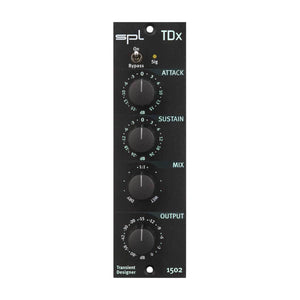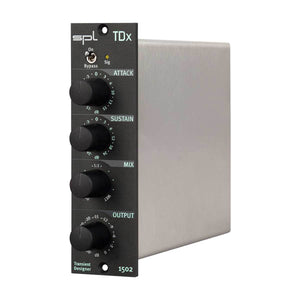Your Cart is Empty


$499.00$622.35
SPL-TDX
SPL TDx Transient Designer module
With the Transient Designer TDx the level-independent processing of signal paths is making headway into the world of 500 series rack modules. Working with the Transient Designer is very simple: Attacks can be amplified or attenuated and sustain may be prolonged or shortened. However, the possibilities for studio and live applications are seemingly endless.
Type: 500 Series


